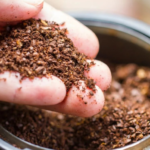If you’ve ever seen a small, dense rubber ball lying around a gym or tucked into a sports bag, chances are it’s a lacrosse ball. While it’s designed for use in the high-intensity sport of lacrosse, its benefits go far beyond the field. In fact, from athletes to physical therapists to everyday people dealing with muscle tension, the lacrosse_ball has become a surprising favorite. But what makes this compact sphere so versatile? And how can you use it to your advantage?
In this article, we’ll explore what a lacrosse_ball is made of, its size and weight, the growing popularity of lacrosse ball massage, and why it’s a tool you’ll want to keep nearby—whether you’re rehabbing an injury or rolling out tight muscles.
🧐 What Is a Lacrosse Ball Made Of?
 Let’s start with the basics. A standard lacrosse_ball is made from solid vulcanized rubber. This gives it just the right amount of firmness to maintain shape and bounce, while still being safe for gameplay and therapeutic use. Unlike other sports balls that are filled with air or designed to compress, the lacrosse_ball is dense—and that’s exactly why it works so well for deep tissue massage.
Let’s start with the basics. A standard lacrosse_ball is made from solid vulcanized rubber. This gives it just the right amount of firmness to maintain shape and bounce, while still being safe for gameplay and therapeutic use. Unlike other sports balls that are filled with air or designed to compress, the lacrosse_ball is dense—and that’s exactly why it works so well for deep tissue massage.
Key properties of a lacrosse ball:
-
Solid, non-hollow core
-
Non-compressible
-
Smooth surface
-
Slightly tacky grip for better control
Because of these properties, it’s become a go-to tool not just for athletes, but for myofascial release, trigger point therapy, and general muscle maintenance.
📏 Lacrosse Ball Size and Diameter
You may be wondering—how big is a lacrosse_ball exactly? According to official regulations by the National Lacrosse League (NLL) and US Lacrosse, the standard lacrosse ball diameter ranges from 2.5 to 2.55 inches (about 6.4 cm). This size makes it ideal for targeting small muscle groups, fitting under your shoulder blades, or rolling out the arches of your feet.
Because of its compact design, the lacrosse_ball is:
-
Easy to carry
-
Easy to use on nearly any body part
-
Small enough to target deep muscle knots
So, the next time you see someone grimacing on the gym floor with a ball under their glutes—yes, that’s exactly what it’s for.
⚖️ Lacrosse Ball Weight: Heavier Than It Looks
Don’t be fooled by its size—lacrosse_balls weigh about 5 ounces (140–147 grams). That’s roughly the weight of a baseball. The weight helps the ball maintain pressure during massage, ensuring it doesn’t simply roll away when placed under your body.
Whether you’re using it for a neck release or glute activation, this weight provides enough resistance to apply pressure on muscles and increase blood flow to targeted areas.
💪 The Magic of the Lacrosse Ball Massage
Here’s where things get really interesting. While lacrosse players rely on the ball for passing, shooting, and scoring, fitness communities worldwide have adopted it for another purpose entirely—muscle recovery.
Why is a lacrosse ball massage so effective?
-
It penetrates deeper than foam rollers
-
It isolates specific muscles or trigger points
-
It increases circulation and reduces muscle stiffness
-
It can aid recovery from workouts and injuries
From desk workers with stiff necks to runners with tight calves, this ball is a game-changer. Just position it between your body and a wall or the floor, apply gentle pressure, and roll slowly.
Popular muscle groups for lacrosse ball massage:
-
Shoulders
-
Glutes
-
Feet (especially plantar fascia)
-
Upper back
-
Hips
🔁 Double Lacrosse Ball (a.k.a. Peanut Ball)
To take things up a notch, many people are now using a double lacrosse ball—two balls taped together in the shape of a peanut. This design allows you to:
-
Avoid pressure on the spine while targeting muscles around it
-
Reach deep postural muscles with better alignment
-
Use it safely along the neck and lower back
It’s especially popular in physical therapy and mobility drills. And best of all, you can DIY one using two standard lacrosse_balls and athletic tape.
🛒 Where to Buy: Finding a Lacrosse Ball Near Me
Looking for a lacrosse_ball near me? They’re widely available both online and in local stores. You’ll often find them in:
-
Sporting goods stores (like Decathlon or Dick’s)
-
General department stores (like Walmart or Target)
-
Online platforms (Amazon, eBay)
-
Physical therapy or rehab clinics
Tip: If you’re buying one for massage, avoid “soft” versions marketed as stress balls. You want the real vulcanized rubber kind for actual effectiveness.
🧠 Why Every Athlete (and Desk Worker) Should Own One
Here’s the truth: you don’t have to play lacrosse to benefit from a lacrosse_ball. Whether you’re lifting weights, running marathons, or sitting in an office chair for 8 hours a day, your muscles accumulate tension and knots. This is where the lacrosse_ball shines.
Real-world benefits:
-
Portable pain relief anywhere, anytime
-
Cost-effective compared to massage therapy
-
Promotes mobility and prevents injury
-
Great for pre-workout activation or post-workout recovery
With just one lacrosse_ball, you can build a daily ritual of self-care that supports your fitness, posture, and long-term performance.
📝 How to Use a Lacrosse Ball (Safely)
 While using a lacrosse_ball is simple, there are some guidelines to keep in mind.
While using a lacrosse_ball is simple, there are some guidelines to keep in mind.
Do:
-
Start gently and apply pressure slowly
-
Breathe deeply during massage
-
Focus on areas of tension for 30–60 seconds
Don’t:
-
Roll directly on bones or joints
-
Use if you’re injured or bruised in that area
-
Expect instant results—consistency is key
🧴 Maintenance: Do Lacrosse Balls Wear Out?
While lacrosse_balls are extremely durable, they’re not indestructible—especially if used daily for massage.
Maintenance tips:
-
Wipe down after use to remove sweat/dirt
-
Store in a dry place
-
Replace if the surface becomes too slick or cracked
If you use it regularly for therapy, you may need a new one every 6–12 months. Luckily, they’re affordable and often sold in multi-packs.
Conclusion
Though originally made for sports, the lacrosse_ball has found a permanent place in gyms, rehab clinics, and even home offices. With its perfect size, weight, and density, it offers powerful relief for sore muscles, enhances mobility, and improves recovery—all for the cost of a few dollars.
If you’re serious about taking care of your body, this small tool can make a big difference.
So, next time you feel a tight knot in your shoulder or stiffness in your back, grab a lacrosse_ball. Your muscles will thank you.
FAQs
1. What is a lacrosse ball made of?
Lacrosse balls are made of solid vulcanized rubber, offering firmness and durability for sports and massage use.
2. How much does a lacrosse ball weigh?
A standard lacrosse ball weighs around 5 ounces (140–147 grams).
3. Can I use a lacrosse ball for massage?
Absolutely! Lacrosse balls are widely used for self-massage, trigger point release, and myofascial therapy.
4. What is the size or diameter of a lacrosse ball?
The typical diameter of a lacrosse ball is between 2.5 and 2.55 inches.
5. Where can I buy a lacrosse ball near me?
You can find them at sports stores, department chains like Walmart, or online platforms like Amazon.






